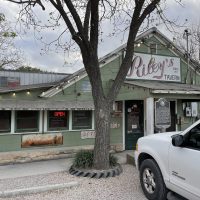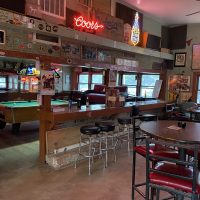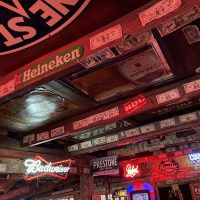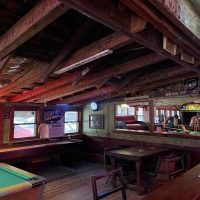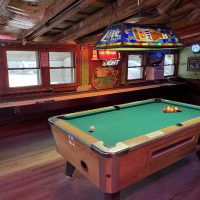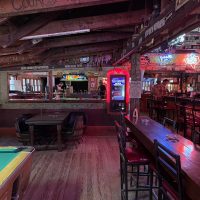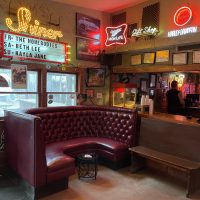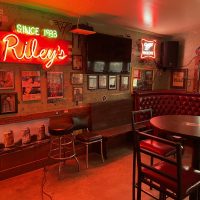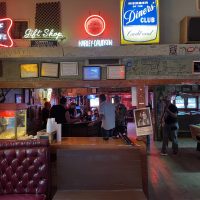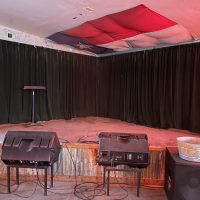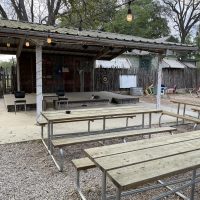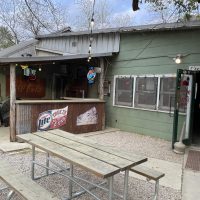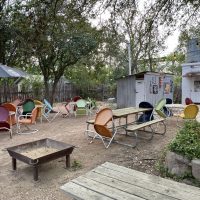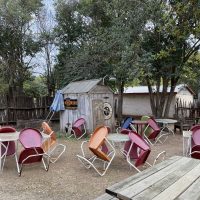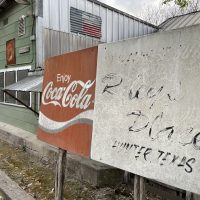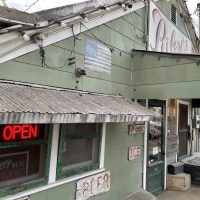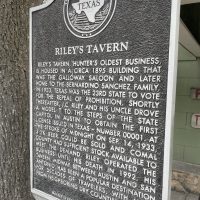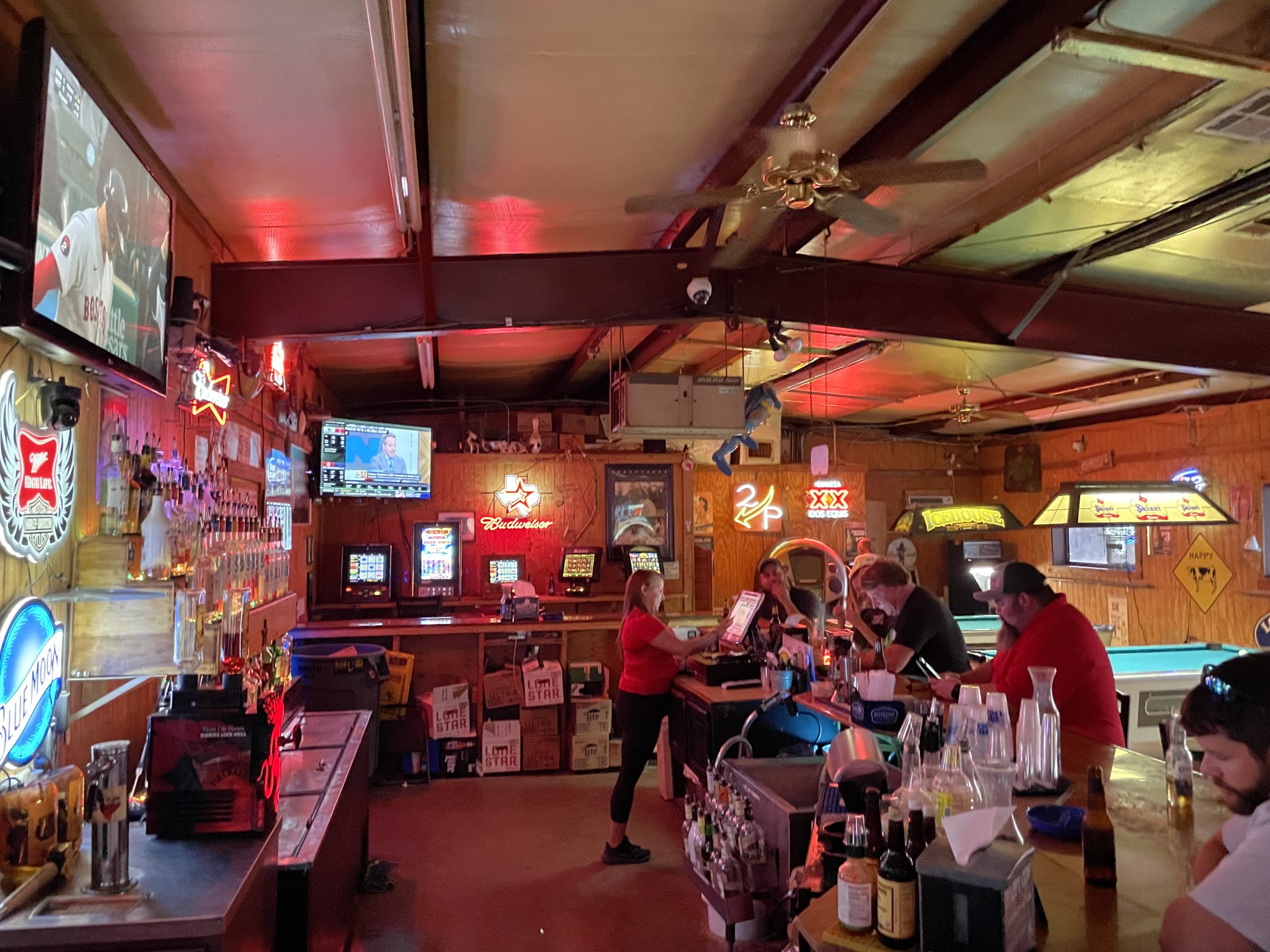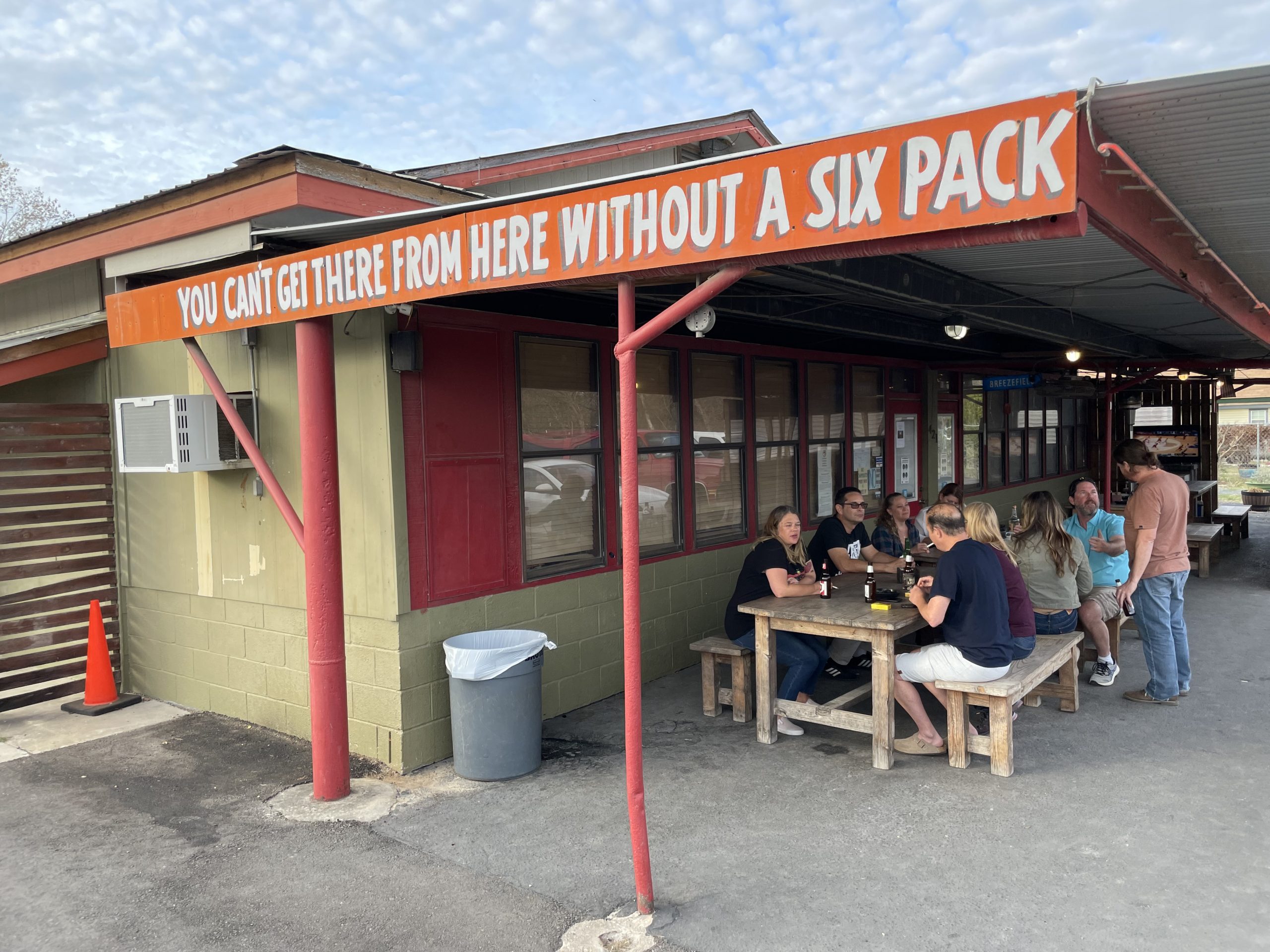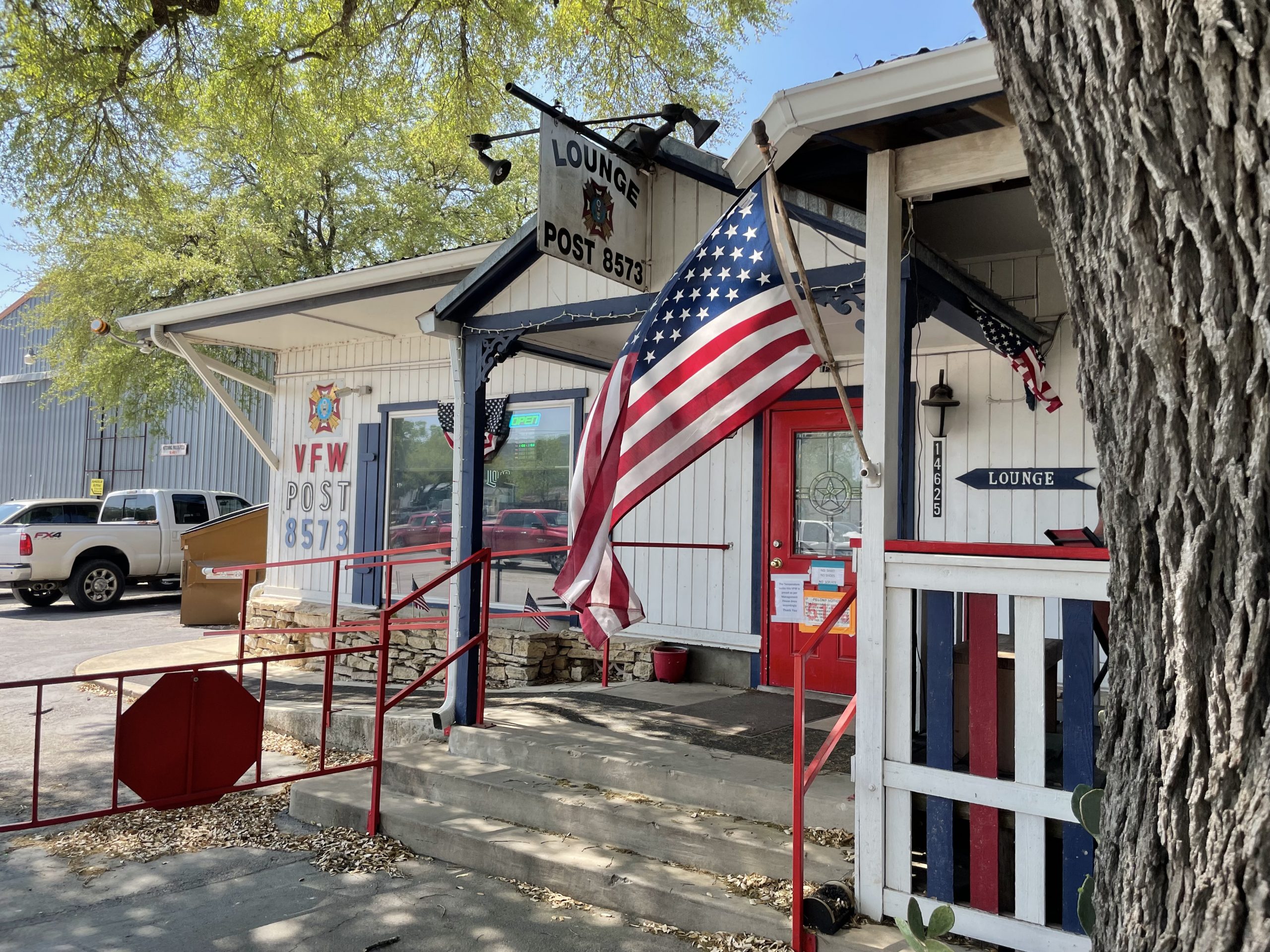Riley’s Tavern
Hunter, Texas
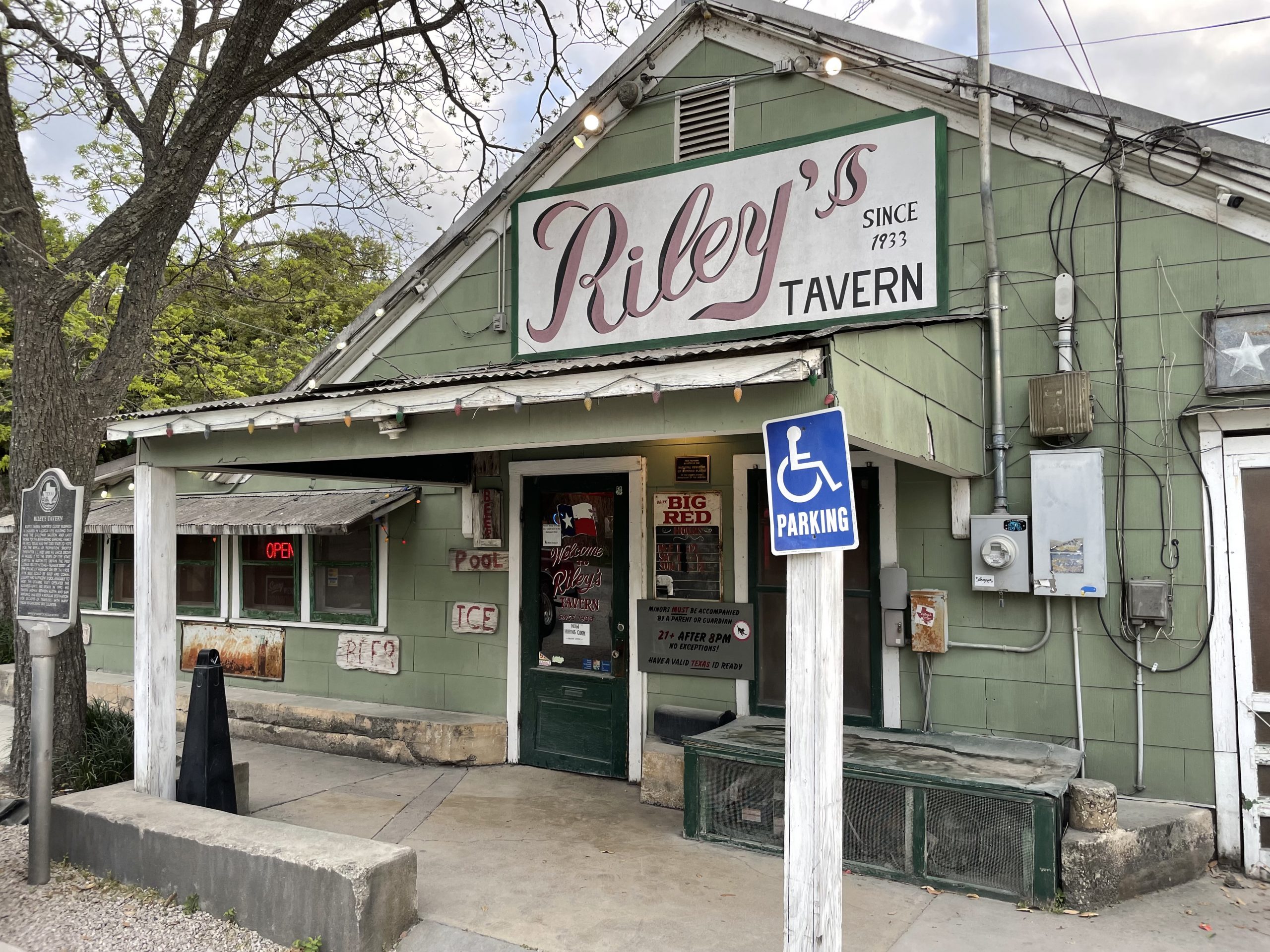
Field Rating
10
out of 10
Original elements dot a building erected in the 1800s, high grade dive bar ambiance.
The Basics
8894 FM110New Braunfels, TX 78132
Connect
In Short
Field Note
Texas has a knack for transforming something historical into something larger than life, a phenomenon that extends to the state’s dive bars, some of them well off the beaten path. Riley’s Tavern in Hunter, Texas (with a New Braunfels address), about an hour northeast of San Antonio, is one of the state’s best examples of translating something time tested into something iconic. The Texas Hill Country dive bar’s stake to claim is Riley’s status as liquor license number one issued in Texas after the repeal of Prohibition, no small distinction.
Added to the National Register of Historic Places in 2018, the historical credibility runs deep, the building Riley’s Tavern inhabits built sometime in the mid-1800s. The space was converted into a saloon upon receiving liquor license number one in 1933 by the bar’s namesake, James Curtis Riley, though there are records that the location served as a saloon named Galloway Saloon well before the institution of Prohibition in 1920. Riley’s Tavern is even noteworthy enough to register a Wikipedia entry, one that cites one of the reasons for the dive bar’s early success as close proximity to both a rail line and dry county.
At the risk of digging a little too far into dive bar history, Riley’s is notable for never closing pre-World War II before curfews were instituted. Sadly, opening hours have been modernized, but a number of elements within Riley’s are still original, including the bar back and beer coolers behind the bar. Comal County, home to Riley’s Tavern, maintains an impressive deep dive into Riley’s history, including the revelation that the historic newspaper clippings seen lining the bar were found during renovations to the bar’s floors, previously used as insulation. The cup holders along the pool area and a wide selection of signs and bottles that dot the space also date back to the opening of the dive bar.
Riley’s Tavern feels like Riley’s Tavern, every bit the Prohibition-era dive bar it always has been.
The worry with a location as historic as Riley’s Tavern that has been elevated into a modern-day institution is the loss of the roughness around the edges that comes with decades of existence. Thankfully, though there are certainly contemporary updates seen at Riley’s and the push for monetizing all of that history is clear, the space itself has been allowed to show dive bar-worthy wear and tear. Ownership has changed hands a few times over the years after leaving the Riley family’s control in the early 1990s, but despite those changes, Riley’s Tavern feels like Riley’s Tavern, every bit the Prohibition-era dive bar it always has been.
Outside, the elements of the dive bar’s rich history are easily seen, long-faded signs dotting the pale green exterior of a low building with a pitched roof. Corrugated metal lines the roof over the front porch, Riley’s official historical marker just below. Inside, the dive bar vibe is felt immediately, the low slope of the pitched roof making for what feels like a low ceiling made even lower, each beam scrawled with graffiti sourced from a few decades worth of patrons.
This front room features the main bar area, resting place of the aforementioned newspaper clippings under sealant atop the bar. Dollar bills uniformly line ledges through the bar area and around the interior space, including the portions of beams not already covered with graffiti. Stained glass-style lamps hang over the bar and most available space here and throughout the building feature is covered with some kind of beer sign, bit of neon, ancient beer bottle or some kind of multi-item combination. Low tables provide the seating here, surrounding one of the dive bar’s two pool tables. An open window in the partition between the bar area and a second room provides a glimpse of the bar’s second, more secluded pool table. An elevated bench slash couch provides some additional seating along the table.
Graffiti, beer signs and the occasional undergarment can be seen along the walls here, some of the bar’s best photos and neon also found in this back room.
Riley’s Tavern is divided into the clearly historic and original portion of the dive bar and an extension built some time later, the separation obvious as the graffiti-lined woodwork gives way to slightly more modern surroundings. Slightly is the key term as graffiti can be seen in the third, rear space within Riley’s, windows again opening up to the bar’s pool room. Graffiti, beer signs and the occasional undergarment can be seen along the walls here, some of the bar’s best photos and neon also found in this back room.
Live music is a regular feature at Riley’s Tavern, most Wednesday’s through Sunday’s occupied by music emanating from either the small stage in the rear room of Riley’s Tavern or the stage shelter out back. The exterior space surrounds the elevated stage, a selection of colorful patio sets and picnic tables providing the seating. Horsehoes can be found out here in addition to an outhouse of sorts and a small bar occasionally used when the sweltering Texas weather relents.
Riley’s Tavern stakes its claim as the oldest bar in Texas, the state’s first liquor license and one of the great dive bars in the state. The experience lives up to those claims, especially within the original first room just inside the front door where it’s easy to see and feel the weight of all of that history. Elevated into an icon, the dive bar’s authenticity has not been compromised in the process, making Riley’s Tavern an easy recommendation in Texas Hill Country.
Related Reviews
Happy Cow Bar & Grill
Home of the Train Shot.
Hoity Toit Beer Bar
Home of the asshole section.
VFW Post 8573
Affordable patriotic drinking.

